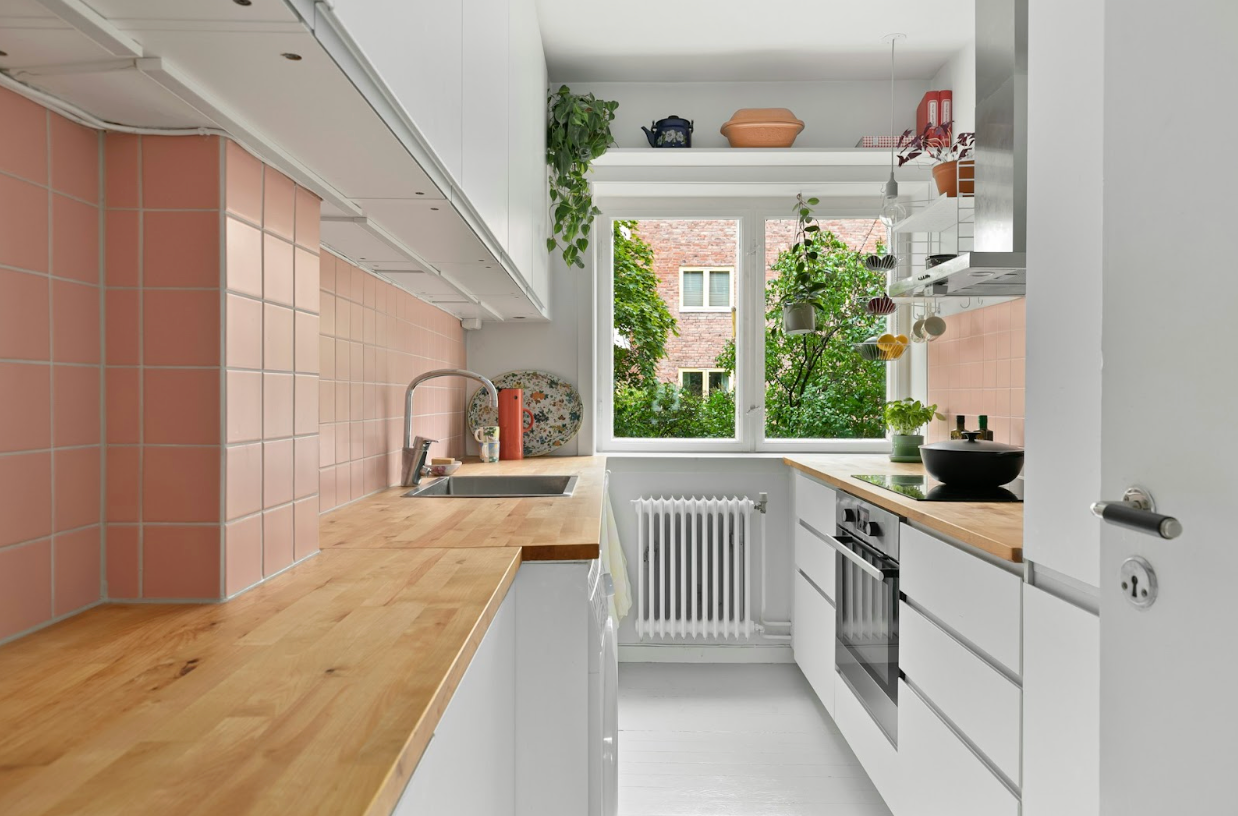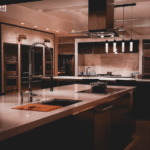Kitchens handle the flow of daily life. They bring people together around food, conversation, and routine. This constant use makes surface material a big part of the room’s success. Soapstone offers a strong and simple answer. It holds up through busy mornings, late-night meals, and every moment between.
Soapstone gives a soft, warm look with strong natural qualities. It comes from quarried stone, feels smooth to the touch, and keeps its color through time. Many modern homes now feature this timeless surface, not just for style but also for its everyday use.
What Is Soapstone?
Soapstone is a soft, strong rock. It comes from deep under the ground. It has something inside called talc. That’s what makes it feel so smooth, like a soft bar of soap. That’s also where it gets its name—soapstone! Even though it feels soft, it’s still strong. Other tiny pieces inside help it stay tough.
Most soapstone is gray or blue-gray. Some have light white lines, like clouds or rivers floating across the stone. No two pieces look the same. Over time, the color gets a little darker. That’s okay—it makes the stone look warm and full of life. It gets better as you use it.
Why Soapstone Works Well in Kitchens
Resists Heat and Acids Without Damage: Soapstone stands up to hot pans and dishes. It handles spills from lemon juice or wine without leaving marks. This makes it a solid pick for families who cook often or leave items out on the counter during meals.
No Sealing Needed : Unlike many other stones, soapstone does not need sealing. It resists stains without chemical treatment. That means no ongoing maintenance schedule or added products. The surface stays clean with a wipe and a rinse.
Ages with Use, Not Against It : Each year adds character to soapstone. The color deepens, and small marks blend into the surface. This look fits well with kitchens that see daily use. People often apply mineral oil to speed the darkening, but that step stays optional.
Feels Smooth, Not Cold or Harsh: Soapstone feels soft and smooth, even with a matte finish. The surface stays gentle on arms and hands during food prep. It gives a quiet contrast to metal appliances and polished cabinets.
How to Clean and Care for Soapstone
- Use warm water and mild soap for daily cleaning.
- Wipe spills with a soft cloth.
- Apply mineral oil if you want a darker, richer look.
- Avoid cutting directly on the surface.
- Keep abrasive tools away from the surface.
Small scratches may appear with use. You can remove them with sandpaper or leave them to blend naturally. Many people prefer the lived-in look that soapstone creates over time.
Where Soapstone Fits in Kitchen Design
Soapstone works in more than one way. It can serve as the main counter material or act as an accent. Some people place it on an island, backsplash, or coffee nook. Its neutral tones make it easy to pair with both light and dark cabinetry.
It fits well in:
- Classic kitchens with wood tones
- Modern spaces with stainless steel
- Farmhouse-style layouts with open shelves
- Minimalist kitchens with clean lines
Explore more options on the Soapstone category page to match the tone and texture that fits your home.
Luna Oro: Soapstone with a Warm, Elegant Tone
Luna Oro brings soft gold and brown shades to the soapstone palette. It blends natural strength with smooth color shifts, perfect for kitchens with warm wood, brass fixtures, or soft lighting.
This surface offers more than function—it brings a grounded feel to everyday life. Whether used on counters, walls, or islands, Luna Oro stands out with quiet style.
Watch Luna Oro in action to see how light and texture play across the surface.
Soapstone vs. Other Kitchen Surfaces
Soapstone is not shiny like granite, marble, or quartz. It looks soft and quiet. The color is smooth, not bright. Granite has little dots that stand out. Quartz is shiny and polished. But soapstone is calm. It has a soft, matte look that feels cozy. Marble can stain. Quartz stays the same. But soapstone is different. Soapstone doesn’t stain as easy as marble. It feels gentle and more forgiving. It also changes slowly over time. The color gets deeper, and it starts to look even nicer.
Some people want soft colors. Some like how smooth it feels. Some want something that looks real and natural. That’s why they choose soapstone. It’s not too fancy. It’s just right—calm, quiet, and kind
Other Uses for Soapstone Around the Home
While kitchens remain the main area, soapstone also works in:
- Bathroom vanities
- Laundry room counters
- Fireplace surrounds
- Outdoor kitchens
- Shelving tops and bar spaces
Each area adds to the full look and brings the same easy care. Soapstone ties rooms together with a steady tone and soft touch.
Why Soapstone Makes Sense for Busy Households
Soapstone stands strong through spills, heat, and long use. It keeps its color, needs little care, and pairs with many styles. The surface looks better with age and helps create a space that feels calm and useful.
For families who cook often or people who want a natural, soft-looking kitchen, soapstone gives a long-lasting surface without fuss.
Where to Find Soapstone for Your Kitchen
For a full selection of soapstone slabs, visit The Stone Outlet. They offer guidance on matching tones, measuring space, and picking surfaces that fit your home and your routine.From Luna Oro to other popular patterns, their collection offers plenty of choice. You can explore, compare, and plan your kitchen upgrade with confidence.


